Underfloor Heating
Find out more about Underfloor Heating
Our wide range of underfloor heating is an innovative and efficient heating solution that provides warmth by circulating heated water through pipes or electric heating elements installed beneath the floor surface. This system offers several advantages over traditional heating methods, such as radiators, by delivering a more even distribution of heat throughout a room.
In hydronic underfloor heating systems, hot water is pumped from a boiler or heat pump through a network of flexible pipes laid out in a specific pattern under the floor. This design allows for a larger surface area to emit heat, resulting in lower energy consumption and improved comfort levels. The warmth radiates upward, warming the room from the ground up, which is particularly beneficial in spaces with high ceilings or large windows.
Electric underfloor heating systems, on the other hand, utilise electric mats or cables that generate heat when electricity passes through them. These systems are often easier to install in smaller areas or renovations since they require less invasive installation compared to hydronic systems.
Underfloor heating is compatible with various floor finishes, including tiles, laminate, and wood, making it a versatile choice for different styles of homes. Additionally, it can be combined with smart home technology, allowing users to control the temperature and schedule heating times for maximum comfort and efficiency. Overall, underfloor heating provides a modern, space-saving solution that enhances the comfort of living spaces while reducing energy costs.
Electric Underfloor Heating
Electric underfloor heating is a popular choice for homeowners looking to enhance comfort and warmth in their living spaces. This system consists of electric heating cables or mats installed beneath the floor surface, providing radiant heat that warms the room from the ground up.
One of the key advantages of electric underfloor heating is its ease of installation. The electric mats can be laid directly on the subfloor and covered with a variety of flooring materials, including tile, laminate, or carpet. This flexibility allows homeowners to choose the flooring that best suits their aesthetic preferences while still benefiting from the warmth provided by the heating system.
Electric underfloor heating systems are known for their quick response times. Once activated, they can begin to warm the room within a short period, making them ideal for spaces that require immediate heat, such as bathrooms or kitchens. Additionally, these systems can be controlled via programmable thermostats, allowing users to set specific temperatures and schedules for different rooms, enhancing energy efficiency.
In terms of maintenance, electric underfloor heating systems are relatively low-maintenance. Regular checks for any signs of wear or damage are recommended, but there are no moving parts that require frequent servicing. Overall, electric underfloor heating offers a comfortable, efficient, and aesthetically pleasing solution for heating residential spaces.
Water Underfloor Heating
Water underfloor heating, also known as hydronic heating, is a highly efficient and effective way to heat your home. This system utilises a network of pipes laid beneath the floor, through which warm water circulates. The heat from the water radiates upwards, warming the room evenly from the ground up.
One of the main benefits of water underfloor heating is its ability to maintain a comfortable temperature with lower water temperatures compared to traditional radiators. This can lead to significant energy savings, as the system can be powered by a variety of heat sources, including boilers, heat pumps, or solar energy. The ability to use renewable energy sources makes hydronic heating an environmentally friendly option.
Installation of water underfloor heating can be more complex than electric systems, often requiring professional expertise to ensure proper layout and connections. The pipes must be carefully spaced and installed, and the system typically needs to be connected to a manifold that distributes the water to various zones in the home. However, once installed, the system is known for its durability and longevity.
Maintenance is generally straightforward, involving regular checks for leaks, monitoring the pump, and ensuring that the system is functioning efficiently. With proper care, water underfloor heating can provide consistent, comfortable warmth for many years.
Underfloor Heating FAQs
What is underfloor heating?
Underfloor heating is a heating system that warms a room by circulating warm water or electric heat beneath the floor surface. This method provides even heat distribution throughout the space, enhancing comfort and energy efficiency while eliminating the need for traditional radiators. It can be installed in various settings, including new constructions and renovations.
What are the benefits of underfloor heating?
The benefits of underfloor heating include:
Even Heat Distribution: It warms the room evenly from the ground up, eliminating cold spots.
Energy Efficiency: Underfloor heating can be more energy-efficient than traditional heating methods, potentially lowering energy bills.
Space-Saving: It frees up wall space since there are no radiators, allowing for more flexible room design.
Increased Comfort: The warm floor provides a cosy feeling, especially in colder months.
Compatibility with Various Floor Types: It can be used with different flooring materials, such as tiles, laminate, and carpet.
Reduced Dust Circulation: Unlike traditional heating systems, underfloor heating can reduce dust circulation, which is beneficial for allergy sufferers.
Can underfloor heating be installed in any type of home?
Yes, underfloor heating can be installed in various types of homes, including new builds and renovations. However, the installation method may differ depending on the existing floor structure and the type of system you choose (hydronic or electric). It's essential to consider factors such as insulation and flooring type to ensure optimal performance.
How does hydronic underfloor heating work?
Hydronic underfloor heating works by circulating warm water through a network of pipes installed beneath the floor surface. Here's how it functions:
Heat Source: The system is connected to a boiler or a heat pump that heats the water.
Piping Layout: A series of flexible pipes are laid out in a specific pattern under the floor, often in loops.
Circulation: The heated water is pumped through these pipes, warming the floor and, in turn, the room above.
Thermostat Control: The system is typically controlled by a thermostat, allowing you to set and maintain your desired temperature.
This method provides even heat distribution, making it an efficient and comfortable heating solution.
How does electric underfloor heating work?
Electric underfloor heating works by using electric heating cables or mats installed beneath the floor surface. Here’s how it operates:
Heating Elements: The system consists of electric cables or heating mats that generate heat when electricity passes through them.
Installation: These cables or mats are laid out under the flooring material, such as tiles or laminate.
Thermostat Control: The system is controlled by a thermostat, allowing you to set the desired temperature for the room.
Heat Distribution: As the cables heat up, they warm the floor, which then radiates heat into the room, providing comfortable warmth.
Electric underfloor heating is typically easier to install in existing homes compared to hydronic systems, making it a popular choice for renovations.
Is underfloor heating expensive to run?
The running costs of underfloor heating can vary based on several factors, including the type of system (hydronic or electric), energy prices, the insulation of your home, and how often you use it. Generally, hydronic systems can be more energy-efficient in larger spaces, while electric systems might be more cost-effective for smaller areas or individual rooms.
It's important to consider your specific situation, including local energy costs and the efficiency of your heating system, to get a better idea of the overall running expenses.
What types of flooring can be used with underfloor heating?
A variety of flooring types can be used with underfloor heating, including:
Tile: Ceramic or porcelain tiles are excellent conductors of heat, making them a popular choice.
Stone: Natural stone, like marble or granite, also works well due to its thermal mass.
Laminate: Some laminate flooring is compatible, but it's essential to check the manufacturer’s guidelines.
Engineered Wood: This type of flooring can be suitable, but it's crucial to ensure it can withstand the heat.
Carpet: While carpet can be used, it's best to choose low tog-rated carpets to allow for better heat transfer.
Always check with the flooring manufacturer to ensure compatibility with your specific underfloor heating system.
How do I maintain my underfloor heating system?
To maintain your underfloor heating system, you can follow these steps:
Check for Leaks: Regularly inspect the system for any signs of leaks, especially in hydronic systems. Look for damp spots on the floor or walls.
Monitor the Pump: Ensure that the pump is functioning correctly. Listen for any unusual noises and check if it’s operating at the right speed.
Clean Filters: If your system has filters, clean or replace them as needed to ensure efficient operation.
Inspect for Wear or Malfunction: Periodically check the components of the system for any signs of wear, such as damaged pipes or cables, and address any malfunctions promptly.
Regular maintenance can help prolong the life of your underfloor heating system and ensure it operates efficiently.
Can I install underfloor heating myself?
Yes, you can install underfloor heating yourself, especially if you're using electric systems, which are generally easier to install. However, it's essential to follow the manufacturer's instructions carefully and ensure you have a good understanding of the electrical aspects involved. For hydronic systems, the installation can be more complex and may require professional assistance, especially for plumbing connections. If you’re comfortable with DIY projects and follow safety guidelines, it’s definitely possible!
How long does it take for underfloor heating to warm up a room?
The time it takes for underfloor heating to warm up a room can vary depending on several factors, including the type of system, the size of the room, the flooring material, and the insulation of the space. Generally, electric underfloor heating can take about 30 minutes to a couple of hours to reach a comfortable temperature. Hydronic systems might take longer, often between 1 to 3 hours, as they need to heat the water in the pipes first.
It's important to note that underfloor heating is designed to provide a consistent and comfortable heat over time, so it may not be as quick as traditional radiators, but it offers a more even heat distribution.

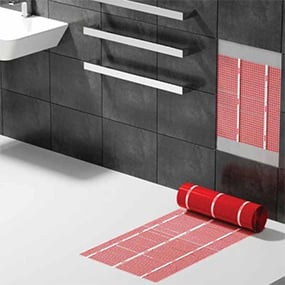
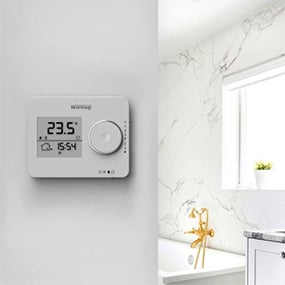

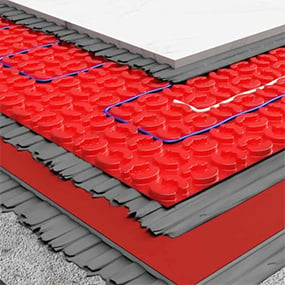
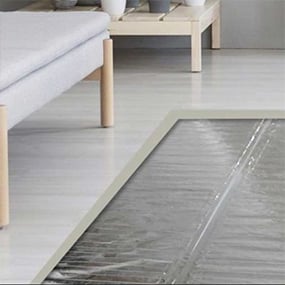
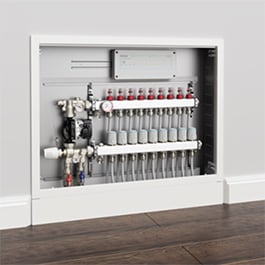
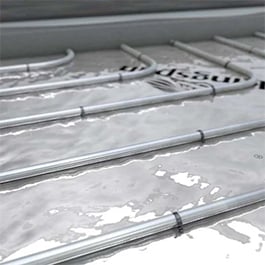

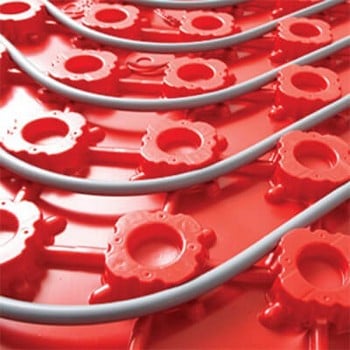
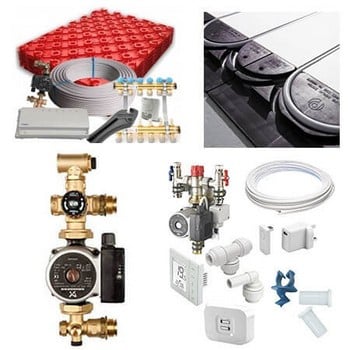


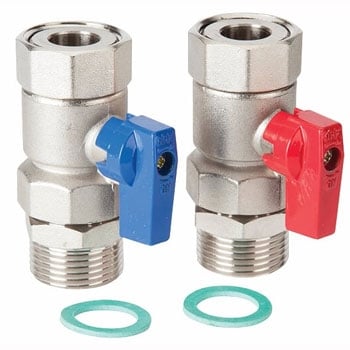
Shop our wide range of Underfloor Heating at Trading Depot. Discover the comfort and efficiency of underfloor heating, a modern heating solution that delivers consistent warmth from the ground up. Perfect for any room, underfloor heating systems work seamlessly with various floor types, including tile, wood, and carpet. They provide even heat distribution, reduce energy costs, and free up wall space, enhancing the aesthetic and functionality of your home. Available in electric and water-based options, underfloor heating is easy to control with smart thermostats, offering customisable comfort for every lifestyle. Upgrade to underfloor heating for a cost-effective, eco-friendly heating alternative.